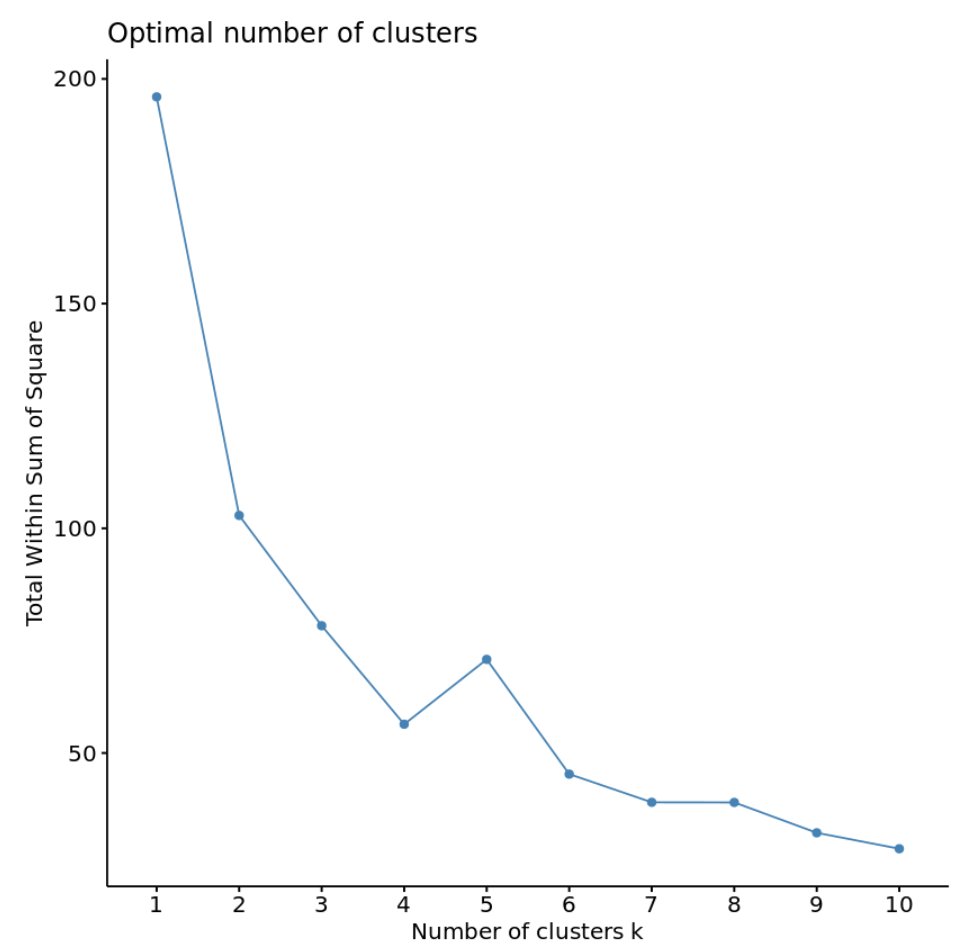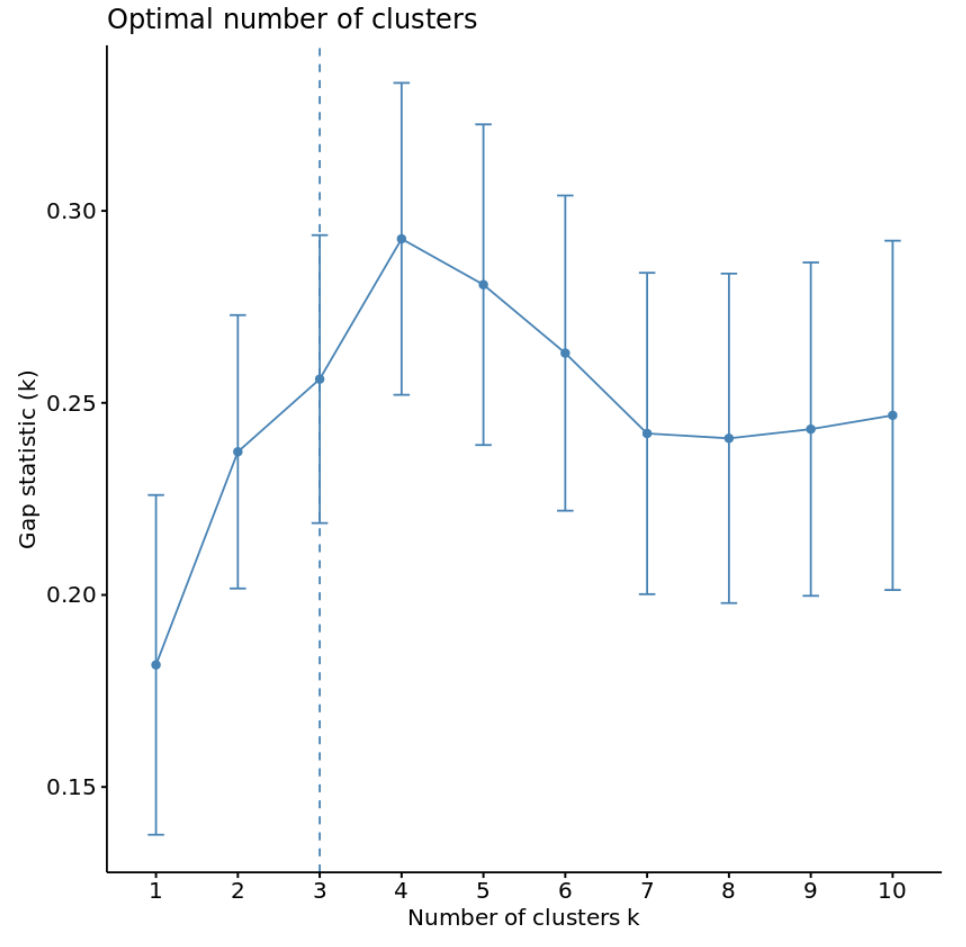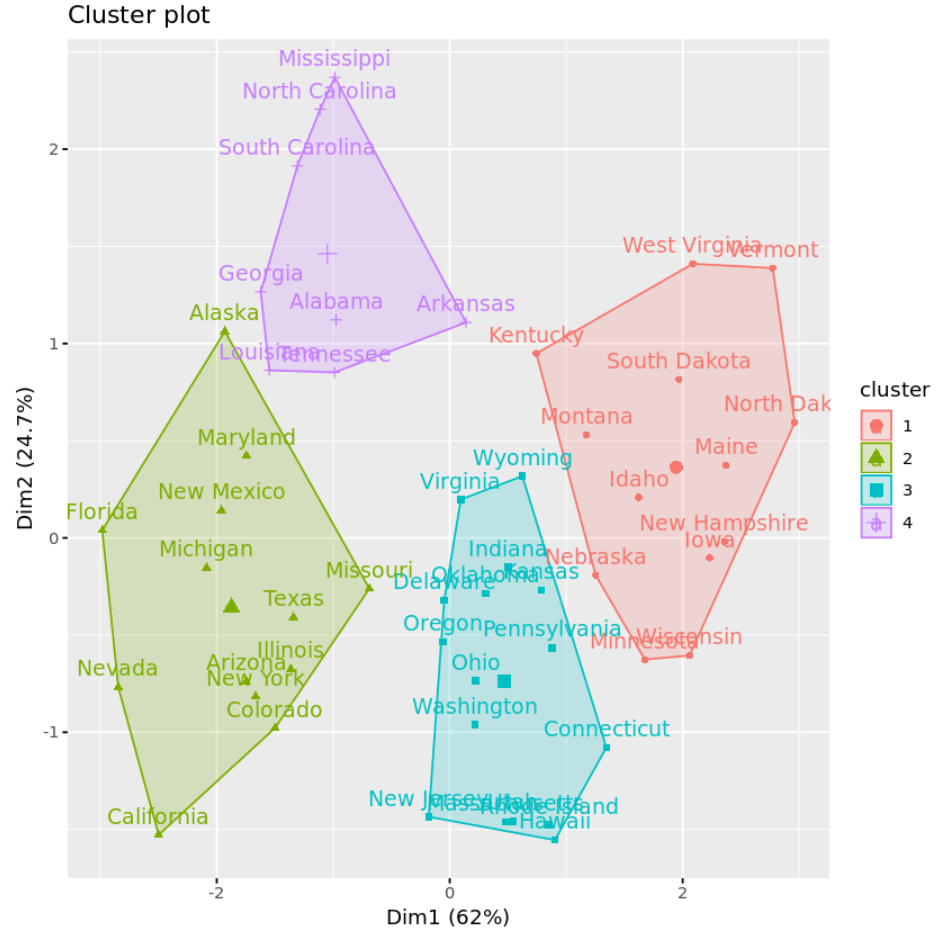Clustering is a technique in machine learning that attempts to find clusters of observations within a dataset.
The goal is to find clusters such that the observations within each cluster are quite similar to each other, while observations in different clusters are quite different from each other.
Clustering is a form of unsupervised learning because we’re simply attempting to find structure within a dataset rather than predicting the value of some response variable.
Clustering is often used in marketing when companies have access to information like:
- Household income
- Household size
- Head of household Occupation
- Distance from nearest urban area
When this information is available, clustering can be used to identify households that are similar and may be more likely to purchase certain products or respond better to a certain type of advertising.
One of the most common forms of clustering is known as k-means clustering.
What is K-Means Clustering?
K-means clustering is a technique in which we place each observation in a dataset into one of K clusters.
The end goal is to have K clusters in which the observations within each cluster are quite similar to each other while the observations in different clusters are quite different from each other.
In practice, we use the following steps to perform K-means clustering:
1. Choose a value for K.
- First, we must decide how many clusters we’d like to identify in the data. Often we have to simply test several different values for K and analyze the results to see which number of clusters seems to make the most sense for a given problem.
2. Randomly assign each observation to an initial cluster, from 1 to K.
3. Perform the following procedure until the cluster assignments stop changing.
- For each of the K clusters, compute the cluster centroid. This is simply the vector of the p feature means for the observations in the kth cluster.
- Assign each observation to the cluster whose centroid is closest. Here, closest is defined using Euclidean distance.
K-Means Clustering in R
The following tutorial provides a step-by-step example of how to perform k-means clustering in R.
Step 1: Load the Necessary Packages
First, we’ll load two packages that contain several useful functions for k-means clustering in R.
library(factoextra) library(cluster)
Step 2: Load and Prep the Data
For this example we’ll use the USArrests dataset built into R, which contains the number of arrests per 100,000 residents in each U.S. state in 1973 for Murder, Assault, and Rape along with the percentage of the population in each state living in urban areas, UrbanPop.
The following code shows how to do the following:
- Load the USArrests dataset
- Remove any rows with missing values
- Scale each variable in the dataset to have a mean of 0 and a standard deviation of 1
#load data df #remove rows with missing values df omit(df) #scale each variable to have a mean of 0 and sd of 1 df #view first six rows of dataset head(df) Murder Assault UrbanPop Rape Alabama 1.24256408 0.7828393 -0.5209066 -0.003416473 Alaska 0.50786248 1.1068225 -1.2117642 2.484202941 Arizona 0.07163341 1.4788032 0.9989801 1.042878388 Arkansas 0.23234938 0.2308680 -1.0735927 -0.184916602 California 0.27826823 1.2628144 1.7589234 2.067820292 Colorado 0.02571456 0.3988593 0.8608085 1.864967207
Step 3: Find the Optimal Number of Clusters
To perform k-means clustering in R we can use the built-in kmeans() function, which uses the following syntax:
kmeans(data, centers, nstart)
where:
- data: Name of the dataset.
- centers: The number of clusters, denoted k.
- nstart: The number of initial configurations. Because it’s possible that different initial starting clusters can lead to different results, it’s recommended to use several different initial configurations. The k-means algorithm will find the initial configurations that lead to the smallest within-cluster variation.
Since we don’t know beforehand how many clusters is optimal, we’ll create two different plots that can help us decide:
1. Number of Clusters vs. the Total Within Sum of Squares
First, we’ll use the fviz_nbclust() function to create a plot of the number of clusters vs. the total within sum of squares:
fviz_nbclust(df, kmeans, method = "wss")

Typically when we create this type of plot we look for an “elbow” where the sum of squares begins to “bend” or level off. This is typically the optimal number of clusters.
For this plot it appears that there is a bit of an elbow or “bend” at k = 4 clusters.
2. Number of Clusters vs. Gap Statistic
Another way to determine the optimal number of clusters is to use a metric known as the gap statistic, which compares the total intra-cluster variation for different values of k with their expected values for a distribution with no clustering.
We can calculate the gap statistic for each number of clusters using the clusGap() function from the cluster package along with a plot of clusters vs. gap statistic using the fviz_gap_stat() function:
#calculate gap statistic based on number of clusters
gap_stat #plot number of clusters vs. gap statistic
fviz_gap_stat(gap_stat)

From the plot we can see that gap statistic is highest at k = 4 clusters, which matches the elbow method we used earlier.
Step 4: Perform K-Means Clustering with Optimal K
Lastly, we can perform k-means clustering on the dataset using the optimal value for k of 4:
#make this example reproducible
set.seed(1)
#perform k-means clustering with k = 4 clusters
km #view results
km
K-means clustering with 4 clusters of sizes 16, 13, 13, 8
Cluster means:
Murder Assault UrbanPop Rape
1 -0.4894375 -0.3826001 0.5758298 -0.26165379
2 -0.9615407 -1.1066010 -0.9301069 -0.96676331
3 0.6950701 1.0394414 0.7226370 1.27693964
4 1.4118898 0.8743346 -0.8145211 0.01927104
Clustering vector:
Alabama Alaska Arizona Arkansas California Colorado
4 3 3 4 3 3
Connecticut Delaware Florida Georgia Hawaii Idaho
1 1 3 4 1 2
Illinois Indiana Iowa Kansas Kentucky Louisiana
3 1 2 1 2 4
Maine Maryland Massachusetts Michigan Minnesota Mississippi
2 3 1 3 2 4
Missouri Montana Nebraska Nevada New Hampshire New Jersey
3 2 2 3 2 1
New Mexico New York North Carolina North Dakota Ohio Oklahoma
3 3 4 2 1 1
Oregon Pennsylvania Rhode Island South Carolina South Dakota Tennessee
1 1 1 4 2 4
Texas Utah Vermont Virginia Washington West Virginia
3 1 2 1 1 2
Wisconsin Wyoming
2 1
Within cluster sum of squares by cluster:
[1] 16.212213 11.952463 19.922437 8.316061
(between_SS / total_SS = 71.2 %)
Available components:
[1] "cluster" "centers" "totss" "withinss" "tot.withinss" "betweenss"
[7] "size" "iter" "ifault"
From the results we can see that:
- 16 states were assigned to the first cluster
- 13 states were assigned to the second cluster
- 13 states were assigned to the third cluster
- 8 states were assigned to the fourth cluster
We can visualize the clusters on a scatterplot that displays the first two principal components on the axes using the fivz_cluster() function:
#plot results of final k-means model
fviz_cluster(km, data = df)

We can also use the aggregate() function to find the mean of the variables in each cluster:
#find means of each cluster
aggregate(USArrests, by=list(cluster=km$cluster), mean)
cluster Murder Assault UrbanPop Rape
1 3.60000 78.53846 52.07692 12.17692
2 10.81538 257.38462 76.00000 33.19231
3 5.65625 138.87500 73.87500 18.78125
4 13.93750 243.62500 53.75000 21.41250
We interpret this output is as follows:
- The mean number of murders per 100,000 citizens among the states in cluster 1 is 3.6.
- The mean number of assaults per 100,000 citizens among the states in cluster 1 is 78.5.
- The mean percentage of residents living in an urban area among the states in cluster 1 is 52.1%.
- The mean number of rapes per 100,000 citizens among the states in cluster 1 is 12.2.
And so on.
We can also append the cluster assignments of each state back to the original dataset:
#add cluster assigment to original data
final_data
#view final data
head(final_data)
Murder Assault UrbanPop Rape cluster
Alabama 13.2 236 58 21.2 4
Alaska 10.0 263 48 44.5 2
Arizona 8.1 294 80 31.0 2
Arkansas 8.8 190 50 19.5 4
California 9.0 276 91 40.6 2
Colorado 7.9 204 78 38.7 2
Pros & Cons of K-Means Clustering
K-means clustering offers the following benefits:
- It is a fast algorithm.
- It can handle large datasets well.
However, it comes with the following potential drawbacks:
- It requires us to specify the number of clusters before performing the algorithm.
- It’s sensitive to outliers.
Two alternatives to k-means clustering are k-medoids clustering and hierarchical clustering.
You can find the complete R code used in this example here.